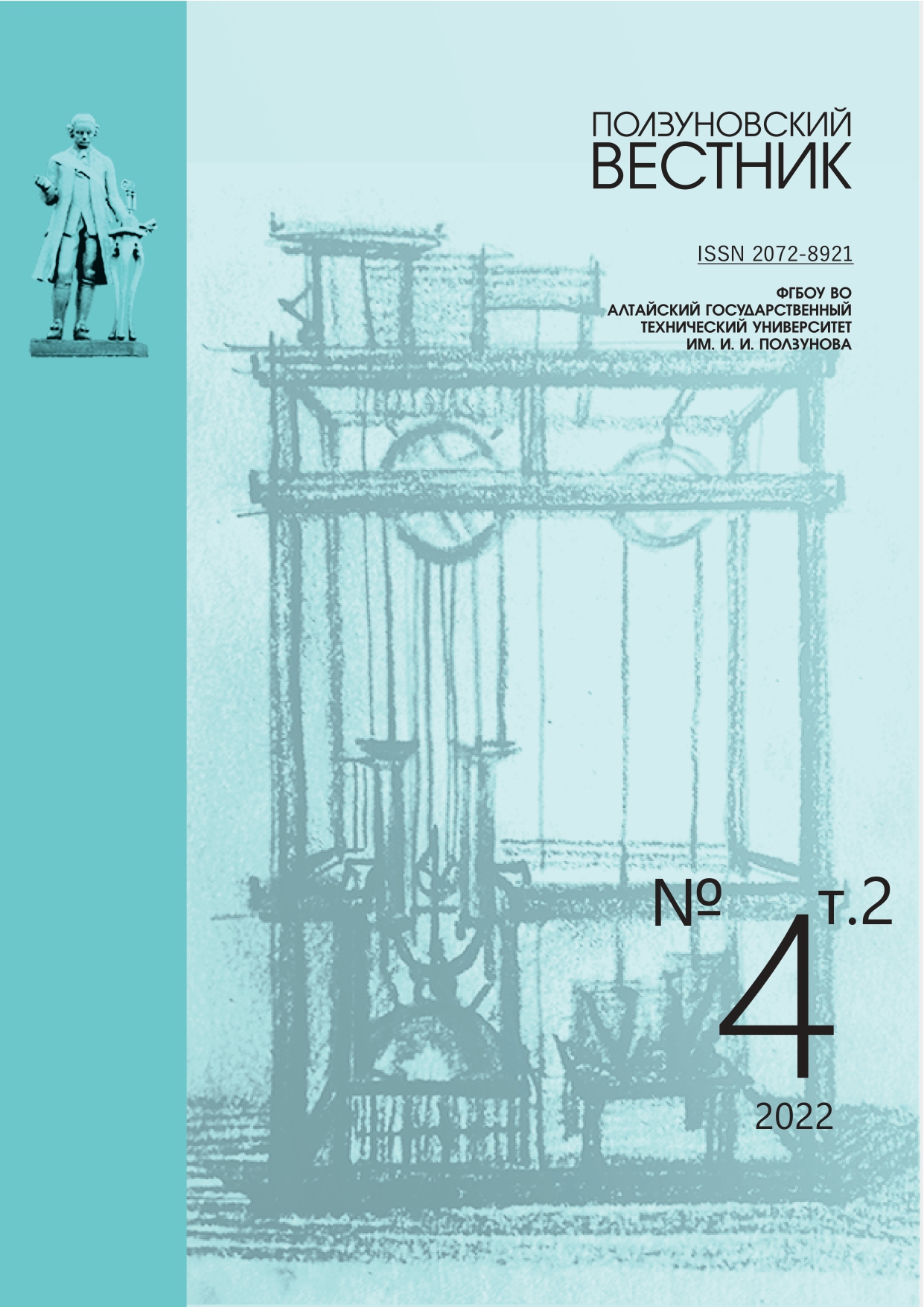METAL NANOPOWDERS COMBUSTION IMAGING USING ILLUMINATION FROM PULSED AND CONTINUOUS WAVE LASERS
QKMHCE
DOI:
https://doi.org/10.25712/ASTU.2072-8921.2022.4.2.019Abstract
The work is devoted to the development of the method for high-speed imaging of high-temperature combustion processes using laser illumination. The object of visualization was a sample of aluminum nanopowder, which combustion temperature reaches 2500 K and is accompanied by a bright glow that varies in a wide range during combustion. It is demonstrated that laser illumination expands the capabilities of a high-speed imaging system and allows a more detailed study of the surface of samples compared to passive imaging by installing a neutral or band-pass filter in front of the high-speed camera lens. Various options for imaging with the installation of light filters with different transmission are considered. To monitor the surface of a burning material with a high-speed video camera in a wide temperature range of an object, it is proposed to use a low-power illumination from a continuous wave solid-state laser or a pulsed laser, as well as a beam expander for uniform illumination of the surface. The results of imaging using illumination from a solid-state laser with a wavelength of 532 nm and a copper bromide vapor laser with a wavelength of 510.6 nm are compared. It is shown that the output power of a solid-state laser of 200 mW with an illumination area diameter of 20 mm is sufficient to visualize “through the flame” the surface of a burning aluminum nanopowder at a low-temperature stage of combustion up to temperatures of ~1950 K. The uniform illumination of the surface can be ensured both by using a diffuser located directly near the sample, and with the use of a telescopic beam expander. Theoretical estimates and experimental results demonstrate that the illumination average power of 200 mW, regardless of the type of laser, is not enough to visualize the surface of a burning aluminum nanopowder at the high-temperature stage. The possibility of complete suppression of illumination during combustion with a temperature above 2500 K will appear when using an illumination laser with an average power of >3,35 W. The proposed illumination technique based on a solid-state laser has advantages in terms of reliability and simplicity compared to known systems based on copper or copper bromide vapor lasers.
References
Gromov, A.A., Khabas, T.A., Ilyin, A.P., Popenko, E.M., Korotkikh, A.G., Arkhipov, V.A., Ditz, A.A., Strokova & Y.I., Tolbanova L.O. (2008) Metal nanopowders combustion. Tomsk: Deltaplan (In Russ.).
Zarko, V.E. & Gromov, A.A. (2016) Energetic Nanomaterials: Synthesis, Characterization, and Application. Amsterdam: Elsevier.
Ilyin, A.P., Korshunov, A.V., Perevezentzeva, D.O. & Tolbanova, L.O. (2010) Problems of diagnostics of nanopowders and nanomaterials. Tomsk: Tomsk Polytechnic University Publishing House. (In Russ.).
Plantier, K.B., Pantoya, M.L. & Gash, A.E. (2005) Combustion wave speeds of nanocomposite Al/Fe2O3: the effects of Fe2O3 particle synthesis technique. Combustion and Flame, (4), 299-309. DOI: 10.1016/j.combustflame.2004.10.009
Zepper, E.T., Pantoya, M.L., Bhattacharya, S., Marston, J.O., Neuber, A.A. & Heaps, R.J. (2017) Peering through the flames: imaging techniques for reacting aluminum powders. Applied Optics, (9), 2535-2541. DOI: 10.1364/AO.56.002535
Trigub, M.V., Evtushenko, G.S., Kirdyashkin, A.I., Kitler, V.D., Yusupov, P.A., Gubarev, F.A., Torgaev, S.N. & Shiyanov, D.V. (2012) Visualization of the SHS process using active media of CuBr lasers. Polzunovskiy vеstnik, (2/1), 181-184. (In Russ.).
Gubarev, F.A., Klenovskii, M.S., Li, L., Mostovshchikov, A.V. & Ilyin, A.P. (2018) High-speed visualization of nanopowder combustion in air. Optica Pura y Aplicada, (4), 1-7. DOI: 10.7149/OPA.51.4.51003
Li, L., Ilyin, A.P., Gubarev, F.A., Mostovshchikov, A.V. & Klenovskii, M.S. (2018) Study of self-propagating high-temperature synthesis of aluminium nitride using a laser monitor. Ceramics International, 2018, (16), 19800-10808. DOI: 1980810.1016/j.ceramint.2018.07.237
Gubarev, F.A., Moldabekov, A.S, Mostovshchikov, A.V. & Li, L. (2021) Two-brightness-Amplifier imaging system for energetic-materials-combustion study. Review of Scientific Instruments, (5), 053702. DOI: 10.1063/5.004016
Soldatov, A.N. & Solomonov, V.I. (1985) Gas-discharge lasers based on self-terminating transitions in metal vapors. Novosibirsk: Nauka (In Russ.).
Evtushenko, G.S., Kazaryan, M.A., Torgaev, S.N., Trigub, M.V. & Shiyanov, D.V. (2016) High-speed brightness amplifiers based on induced transitions in metal vapors. Tomsk: STT. (In Russ.).
Guildenbecher, D.R., Cooper, M.A. & Sojka, P.E. (2016) High-speed (20 kHz) digital in-line holography for transient particle tracking and sizing in multiphase flows. Applied Optics, (11), 2892-2903. DOI: 10.1364/AO.55.002892
Ilyin A.P. Development of electroexplosive technology for obtaining nanopowders at the High Voltage Research Institute at Tomsk Polytechnic University (2003) Bulletin of the Tomsk Polytechnic University, (1), 133-139. (In Russ.).
Ilyin, A.P., Nazaren, O.B. & Tikhonov, D.V. (2012) Synthesis and characterization of metal carbides nanoparticles produced by electrical explosion of wires. Journal of Nanoscience and Nanotechnology, (10) 8137-8142. DOI: 10.1166/jnn.2012.4515
Petrovskiy G.T. (Ed.) (1990) Colored optical glass and special glasses. Moscow: Dom Optiki. (In Russ.)
Sait the company LLC "Las". Retrieved from https://lascompany.ru. (In Russ.).
Sait the company LLC "Photooptic". Retrieved from https://photooptic-filters.com (In Russ.)
Li, L., Shiyanov, D.V. & Gubarev, F.A. (2020) Spatial-temporal radiation distribution in a CuBr vapor brightness amplifier in a real laser monitor scheme. Applied Physics B: Lasers and Optics, (10), 155. DOI: 10.1007/s00340-020-07511-7.
Downloads
Published
How to Cite
Issue
Section
License
Copyright (c) 2022 Fedor A. Gubarev

This work is licensed under a Creative Commons Attribution 4.0 International License.















 .
. This work is licensed under a
This work is licensed under a 
